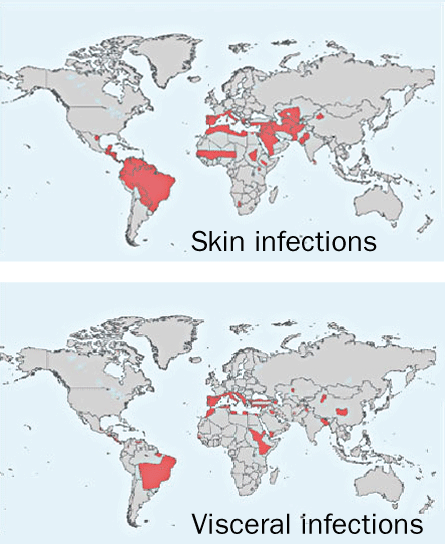Parasite payback
Leishmania might be vulnerable to a common anticancer drug
The breast cancer drug tamoxifen kills the single-celled parasite known as leishmania, a scourge common in the tropics, Brazilian scientists report. While the tests in mice are preliminary, the finding is heartening because few good treatments for leishmaniasis exist, says Silvia Uliana, a physician at the University of São Paulo.

Several species of these protozoa cause the disease leishmaniasis, marked by skin ulcers or deadly liver and spleen damage. It is spread by sand flies.
Leishmania shows up in 88 countries, with an estimated 12 million people infected worldwide and 350 million at risk overall. The hardest hit nations include Bangladesh, India, Nepal, Sudan and Brazil. In 2004, the U.S. military reported that some soldiers serving in Iraq were diagnosed with leishmaniasis. In South America, doctors treating the illness often resort to a series of injections of antimony-based drugs, which have many harmful side effects, Uliana says.
In a review of research, she and her colleagues had noticed reports that tamoxifen, apart from its cancer-inhibiting properties, also changes the acidity inside cells. It so happens that the leishmania parasites thrive in acidic compartments inside immune cells called macrophages. Since tamoxifen increases the pH of these cellular bodies, making them significantly less acidic, the researchers speculated that the drug might damage the parasite.
To test the idea, Uliana and her colleagues injected mice in the tail with a common Brazilian version of the parasite called Leishmania amazonensis. After five weeks, the mice also received injections of tamoxifen or a placebo.
Mice not getting tamoxifen developed dramatic swelling in the tail whereas those injected with tamoxifen showed very minor effects. Blood samples taken 13 weeks into the experiment indicated that the animals getting tamoxifen were nearly free of parasites, while the placebo-treated mice still had a heavy load.
A separate test in leishmania-infected mice showed that tamoxifen significantly outperformed the antimony-based drug meglumine antimoniate. The results appear in the June PLoS Neglected Tropical Diseases.
“This is an excellent report with convincing data,” says Jonathan Berman, a leishmania expert who is retired from the Walter Reed Army Institute of Research in Silver Spring, Md., and who currently advises the World Health Organization on leishmania clinical investigations. He notes, however, that many drugs work in animal studies and subsequently fail in humans.
The key to fighting parasites such as leishmania is to find a biological pathway that the protozoa need — but humans don’t, he says. For example, some antifungal agents show an effect against leishmania because the parasite uses a sterol that fungi use but people don’t, he says.
Whether altering the pH in cells will work equally well remains to be seen, Berman says. Uliana and her team are now testing tamoxifen further in the lab, trying to discern the full effect of the cancer drug on leishmania. Increasing the pH inside macrophages seems responsible for a portion of its salutary effects, she says, “but it’s not the whole story.”
Meanwhile, leishmaniasis is spreading along with sand flies in Brazil, Uliana says. “The insect vector is becoming adapted to urban areas as well as the woods, where it used to do its breeding,” she says.







